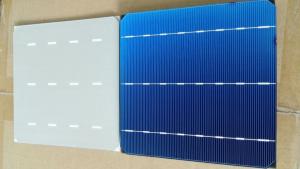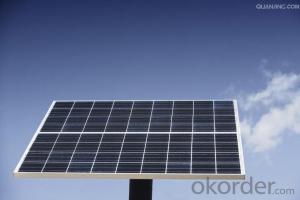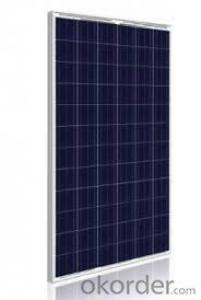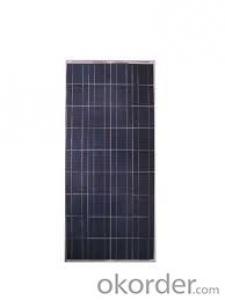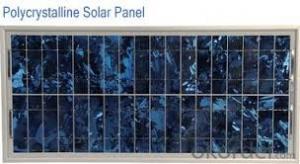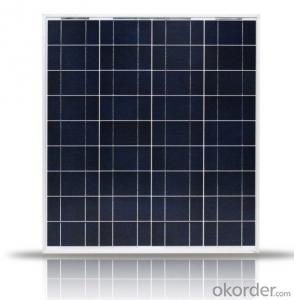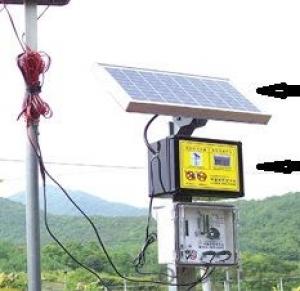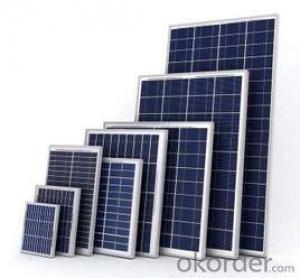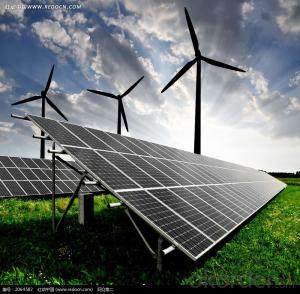White Solar Cells 250W Poly Solar Panel with 25 Years Warranty CNBM
- Loading Port:
- Qingdao
- Payment Terms:
- TT OR LC
- Min Order Qty:
- 10 set
- Supply Capability:
- 300000 set/month
OKorder Service Pledge
OKorder Financial Service
You Might Also Like
Polycrystalline Solar Modules
CNBM offers a range of small, medium and large polycrystalline solar modules, designed for a range of requirements.
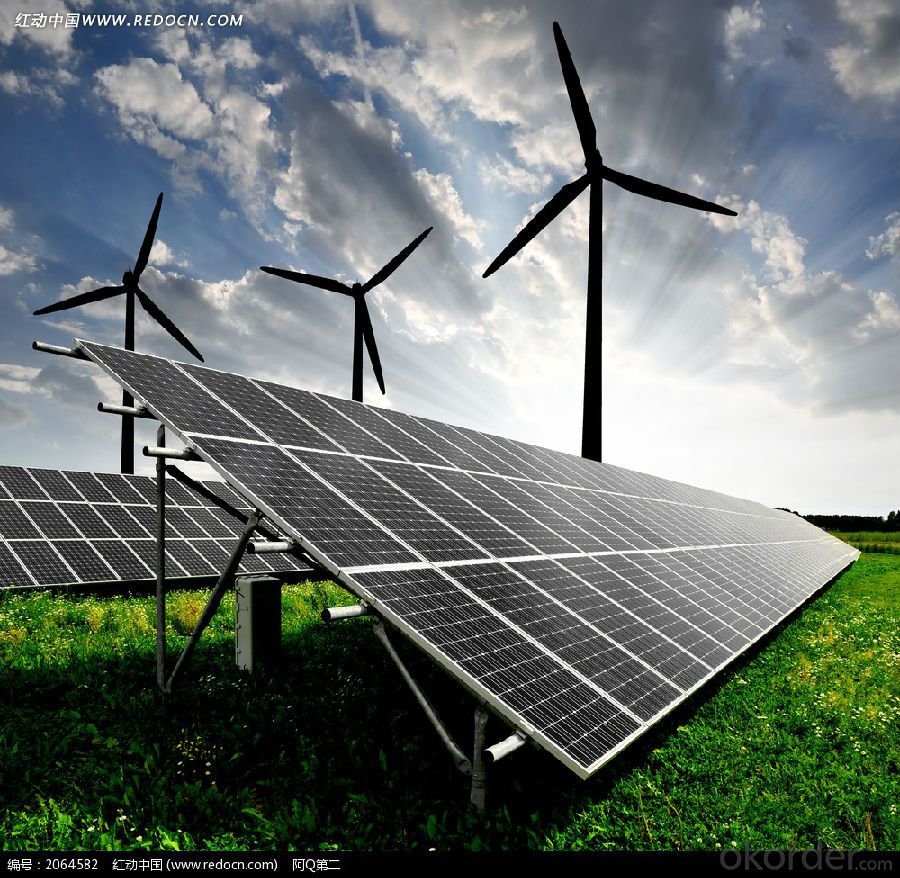
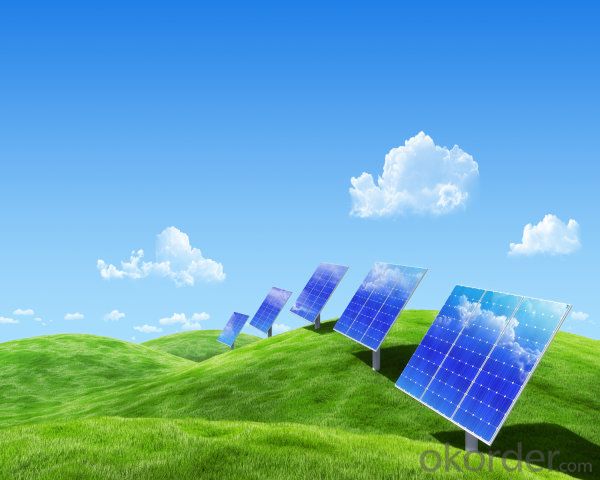
Specifications:
Tolerance | +/-3% |
Cell | Polycrystalline silicon solar cells (156 x 156mm) |
N0. of Cells | 60 (10 x 6) |
Dimension of Modules (mm) | 1650 x 990 x 40 |
Weight (kg) | 25.5 |
Limits:
Operating Temperature | -40~+85? |
Storage Temperature | -40~+85? |
Maximum System Voltage | 1000 VDC max. |
Hail Impact | Diameter of 28mm with impact speed |
Temperature and Coefficients:
NOCT | 48C+/-2? |
Voltage temperature coefficient (%/K) | -0.35 |
Current temperature coefficient (%/K) | 0.05 |
Power temperature coefficient (%/K) | -0.45 |
Characteristics:
Model: | SGM-200P | SGM-210P | SGM-220P |
Max-power voltage Vmp (V) | 29.2 | 29.4 | 29.41 |
Max-power current Imp (A) | 6.85 | 7.14 | 7.48 |
Open-circuit voltage Voc (V) | 36.5 | 36.69 | 36.9 |
Short-Circuit Current Isc (A) | 7.28 | 7.6 | 7.93 |
Max-power Pm(W) | 200 | 210 | 220 |
Model: | SGM-230P |
Max-power voltage Vmp (V) | 29.8 |
Max-power current Imp (A) | 7.72 |
Open-circuit voltage Voc (V) | 37.31 |
Short-Circuit Current Isc (A) | 8.19 |
Max-power Pm(W) | 230 |
STC: Irradiance 1000W/m2, module temperature 25?, AM-=1.5
Poly Crystalline Solar Panels Specifications Range
Maximum Power (Pm) | Dimension | Weight | Operating Voltage (Vmp) | Operating Current (Imp) | Open Circuit Voltage (Voc) | Short Circuit Current (Isc) |
0.45W | 140x80x10mm | 0.08kg | 3.3V | 150mA | 4.6V | 160mA |
1.0W | 162x140x10mm | 0.16kg | 7.5V | 150mA | 10.3V | 160mA |
4.5W | 269x251x23mm | 0.8kg | 16.5V | 0.27A | 20.5V | 0.3A |
10W | 420.1×268.9×22.6mm | 1.92kg | 17.5V | 0.58A | 20.5V | 0.6A |
20W | 425x502x50mm | 3.0kg | 16.8V | 1.19A | 21.0V | 1.29A |
30W | 593x502x22.6mm | 3.9kg | 16.8V | 1.78A | 21.0V | 1.94A |
40W | 655x537x50mm | 5.75kg | 17.3V | 2.31A | 22.1V | 2.54A |
50W | 839x537x50mm | 6.0kg | 17.5V | 2.9A | 21.8V | 3.17A |
65W | 1111x502x50mm | 7.2kg | 17.6V | 3.69A | 22.1V | 3.99A |
80W | 1204x537x50mm | 7.7kg | 17.6V | 4.55A | 22.1V | 4.8A |
- Q: Can solar cells be used for powering concert venues?
- Yes, solar cells can be used for powering concert venues. Solar panels can be installed on the roof or surrounding areas of the venue to capture sunlight and convert it into electricity. This renewable energy source can help reduce the carbon footprint of the venue and provide a sustainable solution for powering concerts.
- Q: Can I buy solar cells easily online?
- I think so.
- Q: Monocrystalline silicon and polycrystalline silicon cell in the appearance of what is the difference?
- For the user, monocrystalline silicon cells and polysilicon batteries are not much different. Monocrystalline silicon and polycrystalline silicon cell life and stability are very good.
- Q: Can solar cells be used in boats or marine applications?
- Yes, solar cells can be used in boats or marine applications. Solar panels can be installed on the deck or roof of a boat to harness the power of the sun and convert it into electricity. This electricity can then be used to power various onboard systems such as lights, navigation equipment, communication devices, and even recharge batteries. Solar power offers a sustainable and environmentally-friendly energy solution for boats, reducing reliance on traditional fuel sources and minimizing the carbon footprint of marine activities.
- Q: Where and how can we find the best solar cells suppliers?
- Since there are so many solar cells in the market all over the world, the best way to sort out the best solar cell supplier to use the internet and its search engine to fine those solar cell suppliers with good ratings.
- Q: Can solar cells be used in countries with limited sunlight?
- Yes, solar cells can still be used in countries with limited sunlight. While solar cells are most efficient in areas with abundant sunlight, they can still generate electricity even in regions with limited sunlight. Advances in technology have made solar cells more efficient and capable of capturing and converting sunlight into electricity even in low-light conditions. Additionally, solar cells can be combined with battery storage systems to store excess energy generated during sunny periods for use during cloudy or nighttime hours. Thus, solar cells can be a viable and sustainable energy solution in countries with limited sunlight.
- Q: How are solar cells manufactured?
- Solar cells are manufactured through a multi-step process that involves the production of silicon wafers, the creation of a p-n junction, and the assembly of various layers to form the final solar cell. This involves slicing the silicon into thin wafers, doping them to create the desired electrical properties, applying metal contacts, and then encapsulating them to protect against environmental factors.
- Q: How do solar cells compare to fossil fuels in terms of energy production?
- Solar cells are a more sustainable and environmentally friendly option for energy production compared to fossil fuels. While fossil fuels are limited in supply and contribute to air pollution and climate change, solar cells harness the power of the sun to generate electricity without emitting harmful greenhouse gases. Additionally, solar cells have the potential for decentralized energy production and can be installed in various locations, making them a more flexible and accessible source of energy.
- Q: Can somebody list some of the materials used for making solar cells?
- There are quite many materials to make a solar cell, but silicon is something you need to have.
- Q: What is the average cost of a solar cell?
- The average cost of a solar cell can vary depending on factors such as the type and size of the cell, the manufacturer, and the region. However, as of 2021, the average cost ranges from $0.20 to $0.80 per watt for photovoltaic solar cells.
Send your message to us
White Solar Cells 250W Poly Solar Panel with 25 Years Warranty CNBM
- Loading Port:
- Qingdao
- Payment Terms:
- TT OR LC
- Min Order Qty:
- 10 set
- Supply Capability:
- 300000 set/month
OKorder Service Pledge
OKorder Financial Service
Similar products
Hot products
Hot Searches
Related keywords










